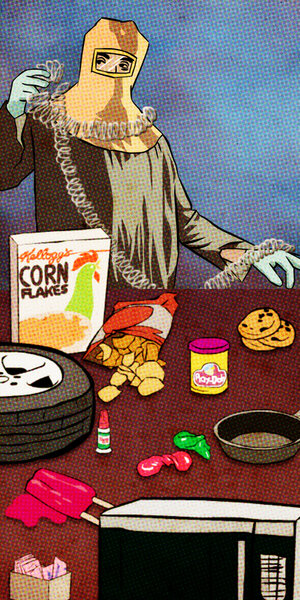Saccharin came as a sweet surprise – and a scary one.
Before Sweet’N Low and diet sodas, there was a plucky researcher studying something completely different: coal tar.
In the 1870s, Russian chemist Constantin Fahlberg worked in the lab of Ira Remsen at Johns Hopkins University. Remsen's team experimented with coal-tar derivates, seeing how they react to phosphorus, chloride, ammonia, and other chemicals. (Not exactly the most appetizing profession.)
One night, Fahlberg returned home and started to chow down on dinner rolls. Something was off. The rolls tasted curiously sweet. The recipe hadn't changed, so what was going on here? He soon realized that it wasn't the rolls. It was him. His hands were covered with a mystery chemical that made everything sweet.
"Fahlberg had literally brought his work home with him, having spilled an experimental compound over his hands earlier that day," writes the Chemical Heritage Foundation in its history of saccharin. "He ran back to Remsen’s laboratory, where he tasted everything on his worktable—all the vials, beakers, and dishes he used for his experiments. Finally he found the source: an overboiled beaker."
Fahlberg had actually created saccharin before, but since he never bothered to taste-test his concoctions, the chemist had no idea. In fact, a modern chemist probably would have never discovered saccharin. Nowadays, people thoroughly wash their hands before leaving the lab. If Fahlberg had followed the normal rules of cleanliness, the world would be without this zero-calorie artificial sweetener.







